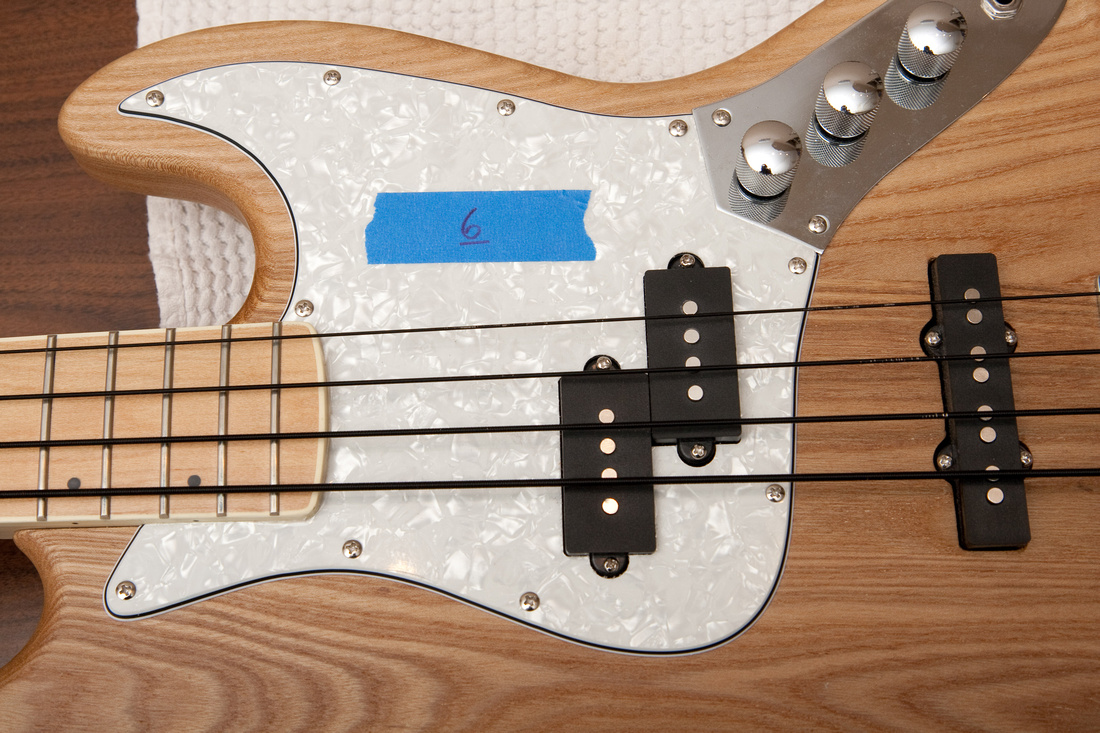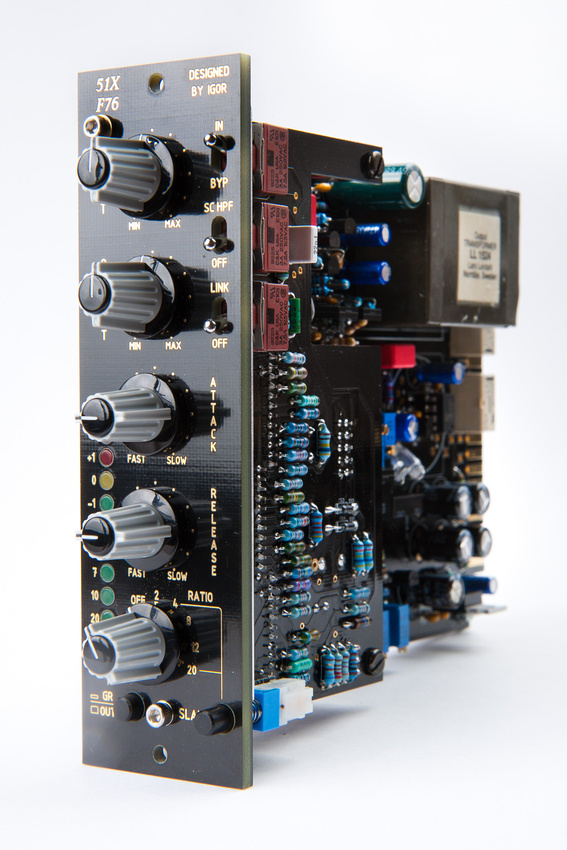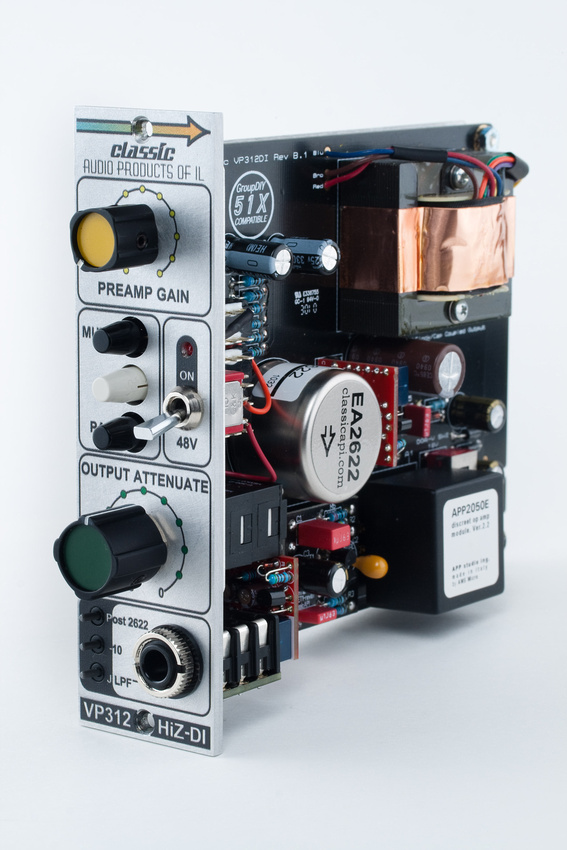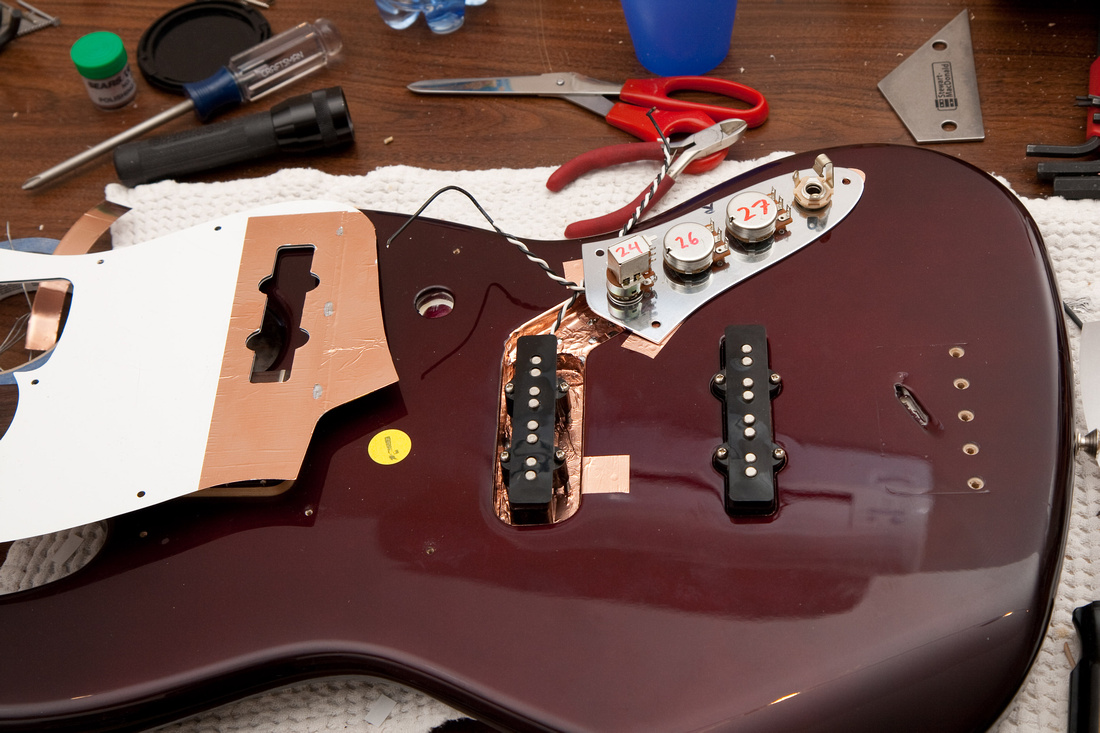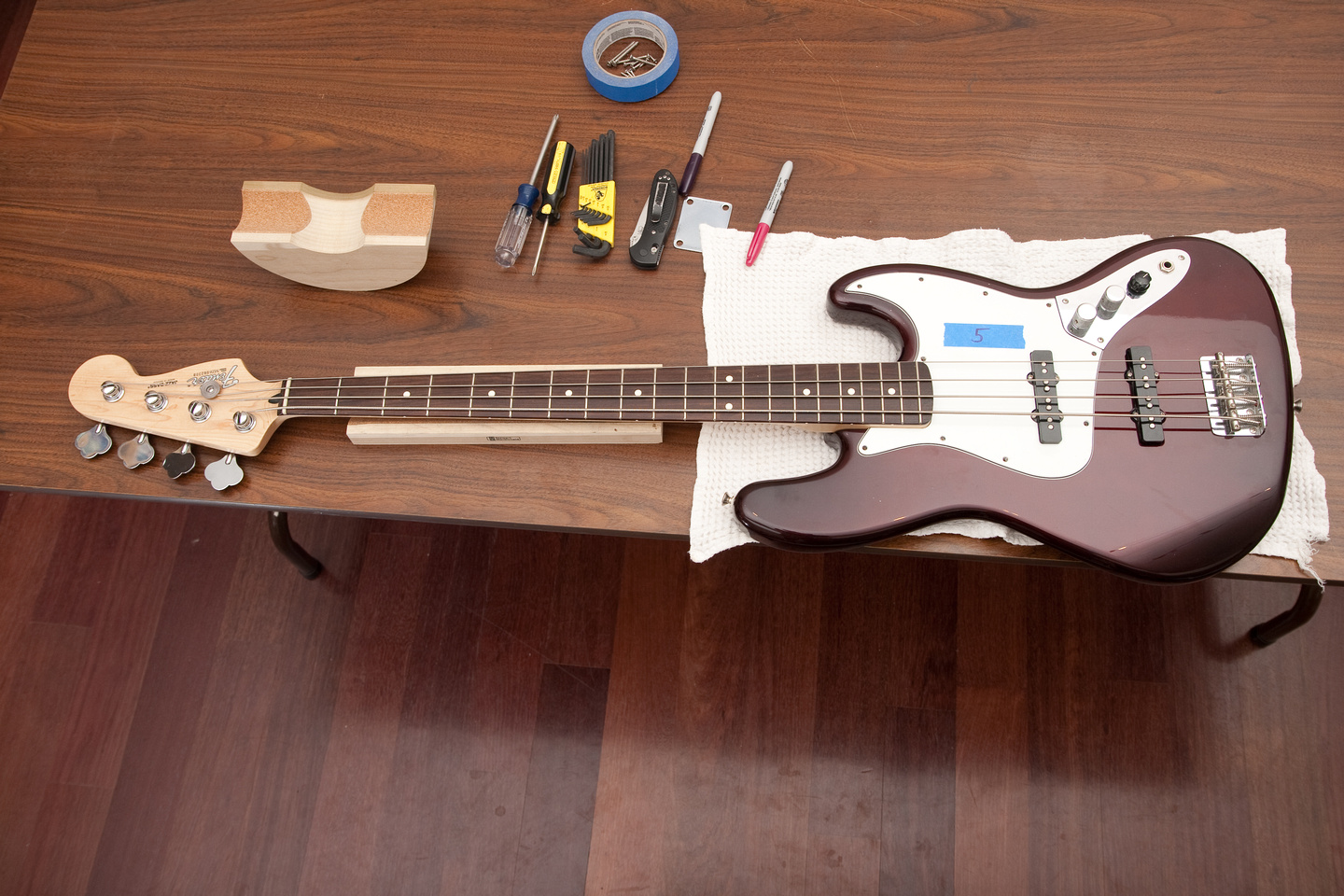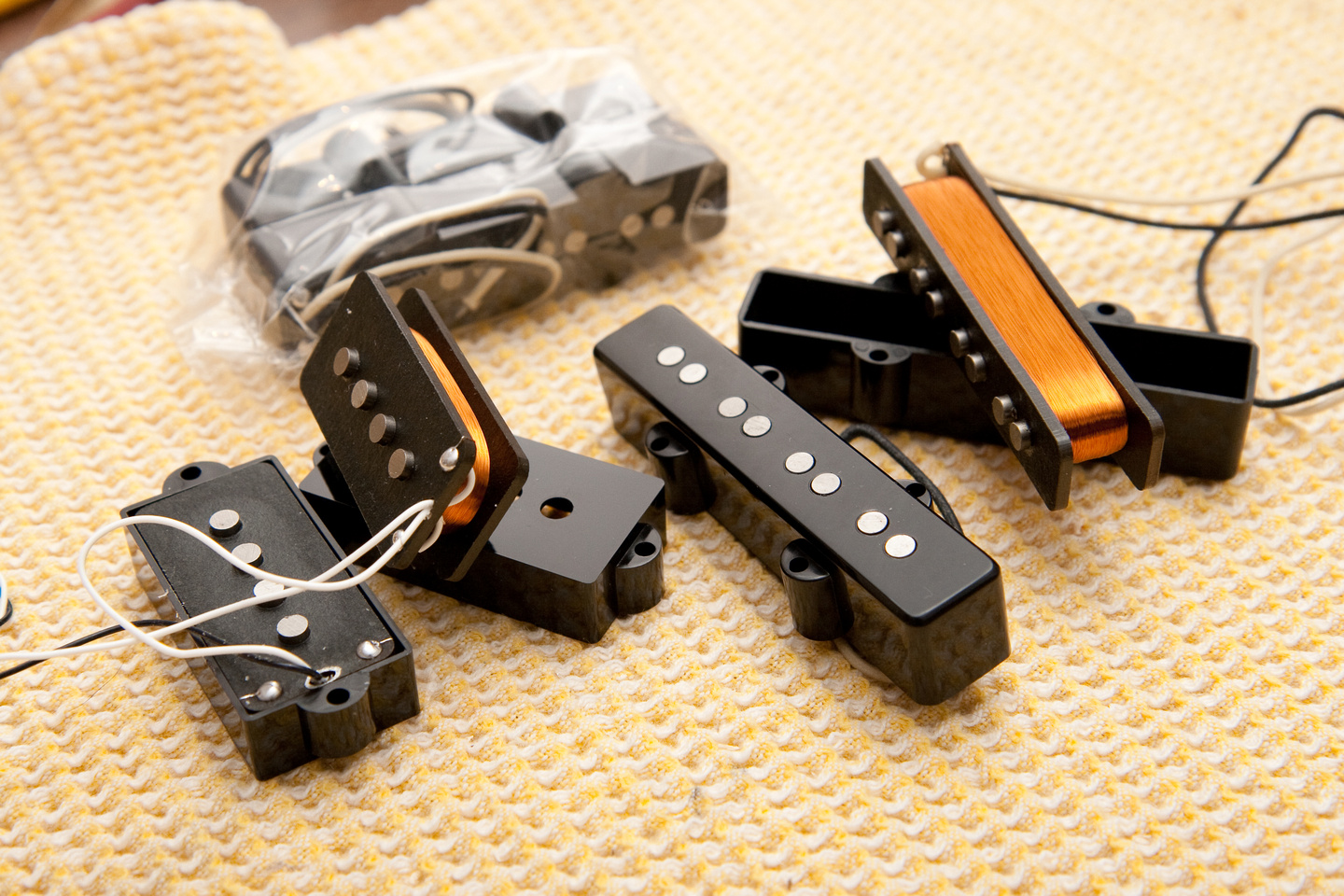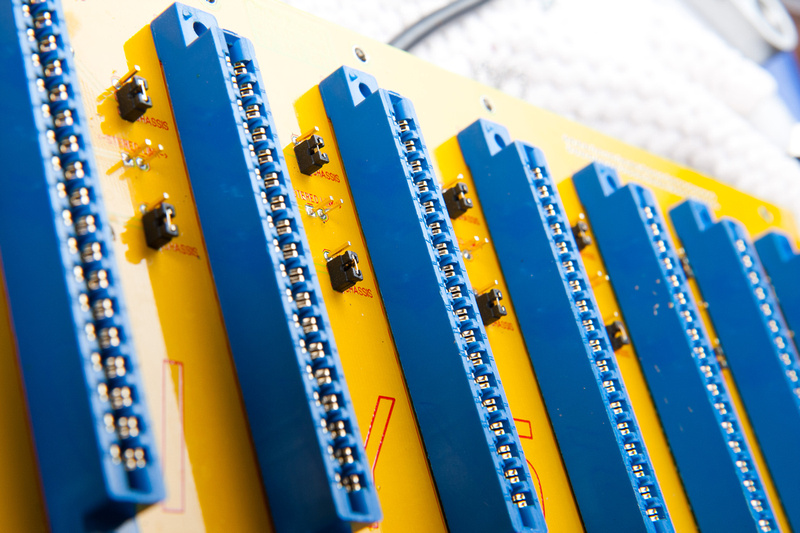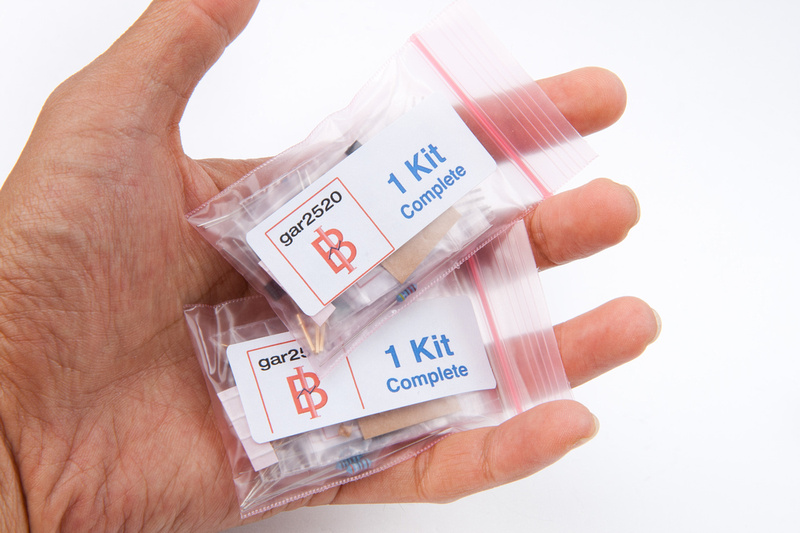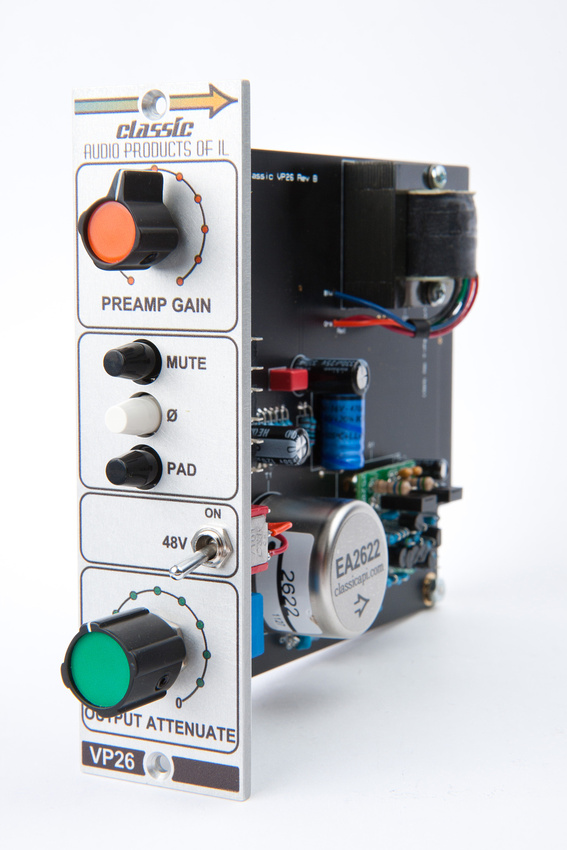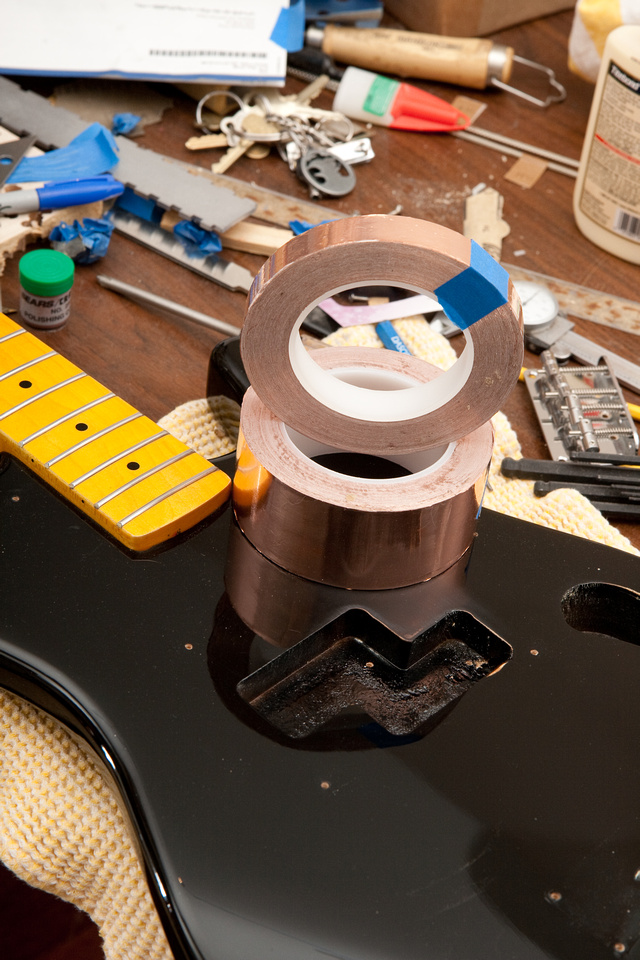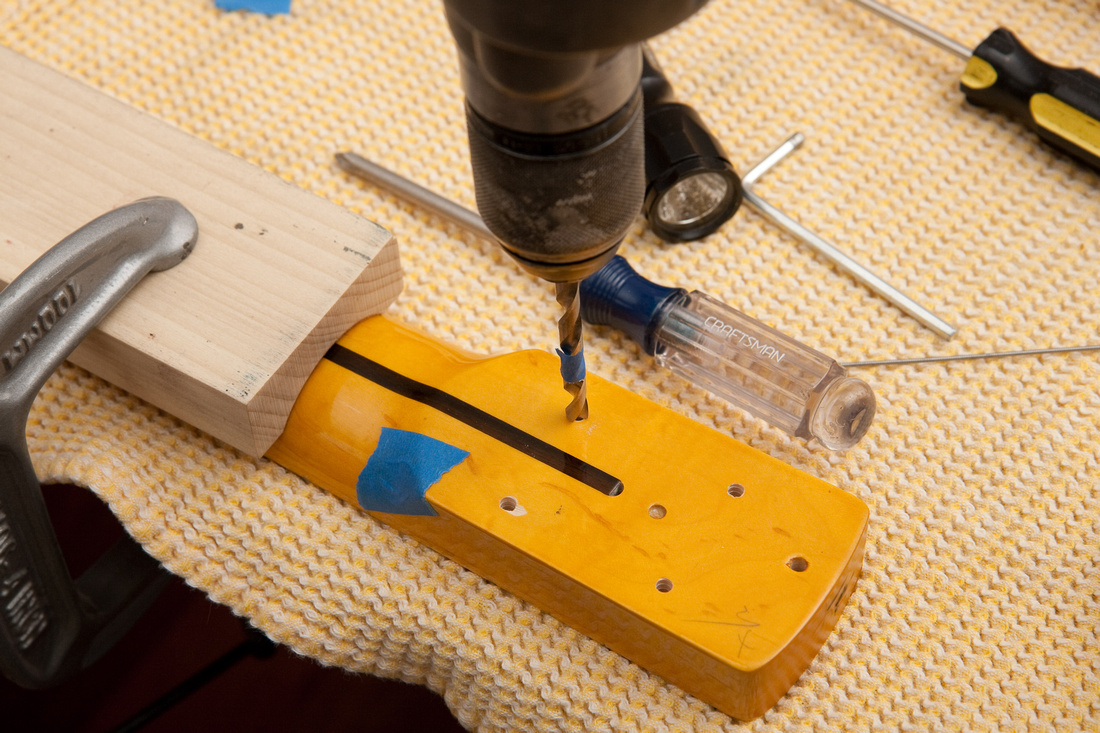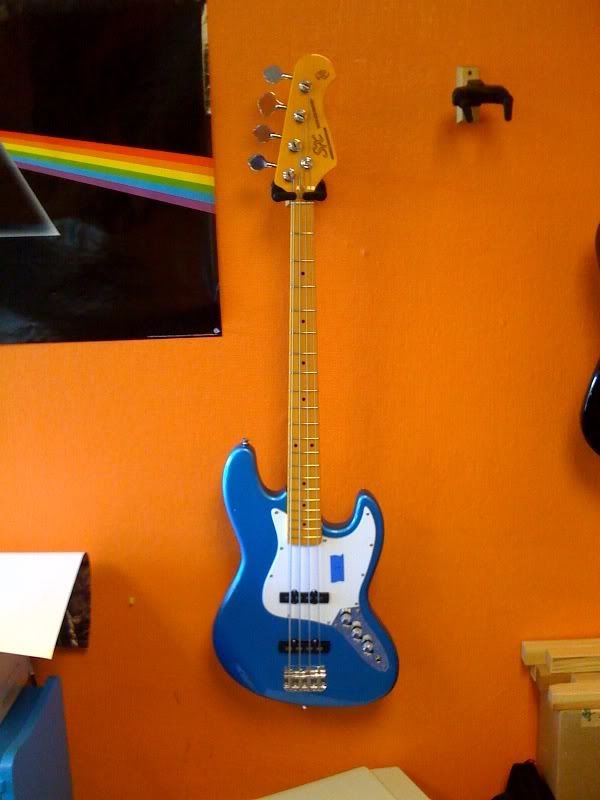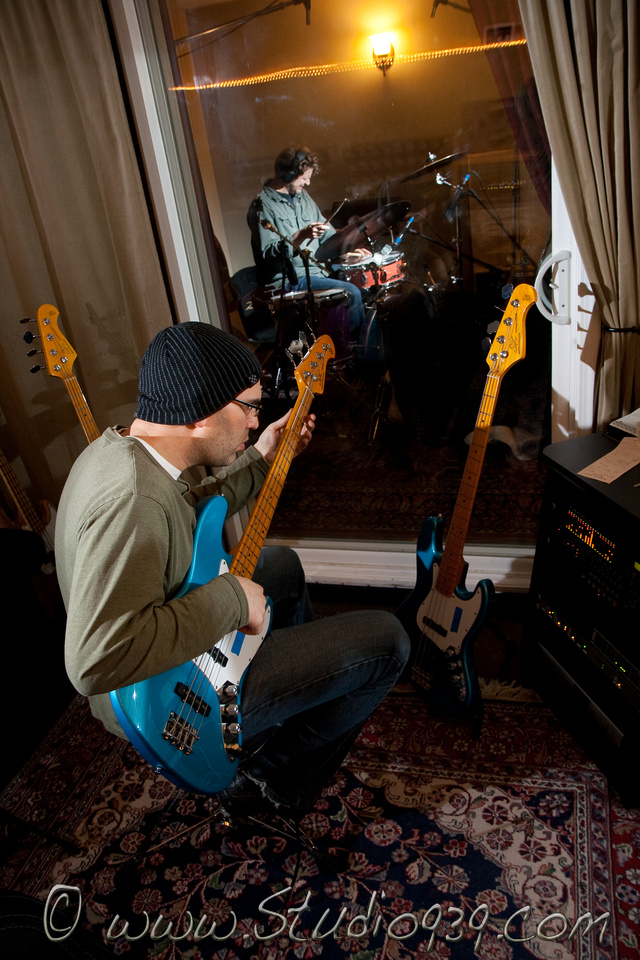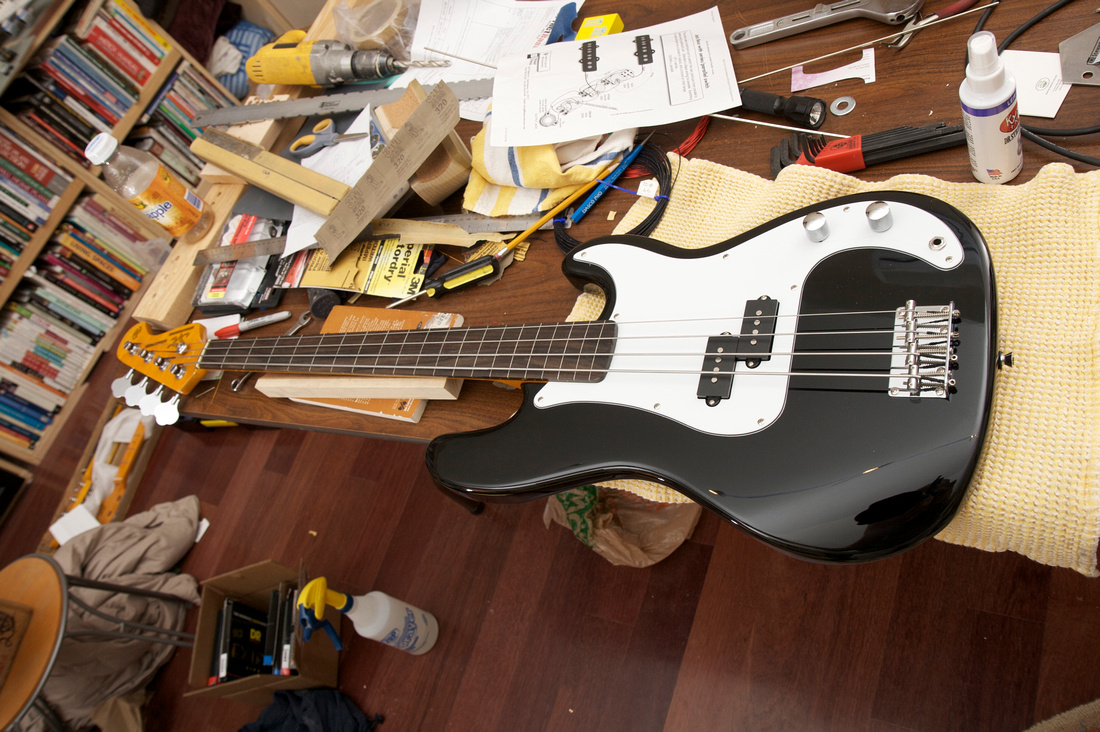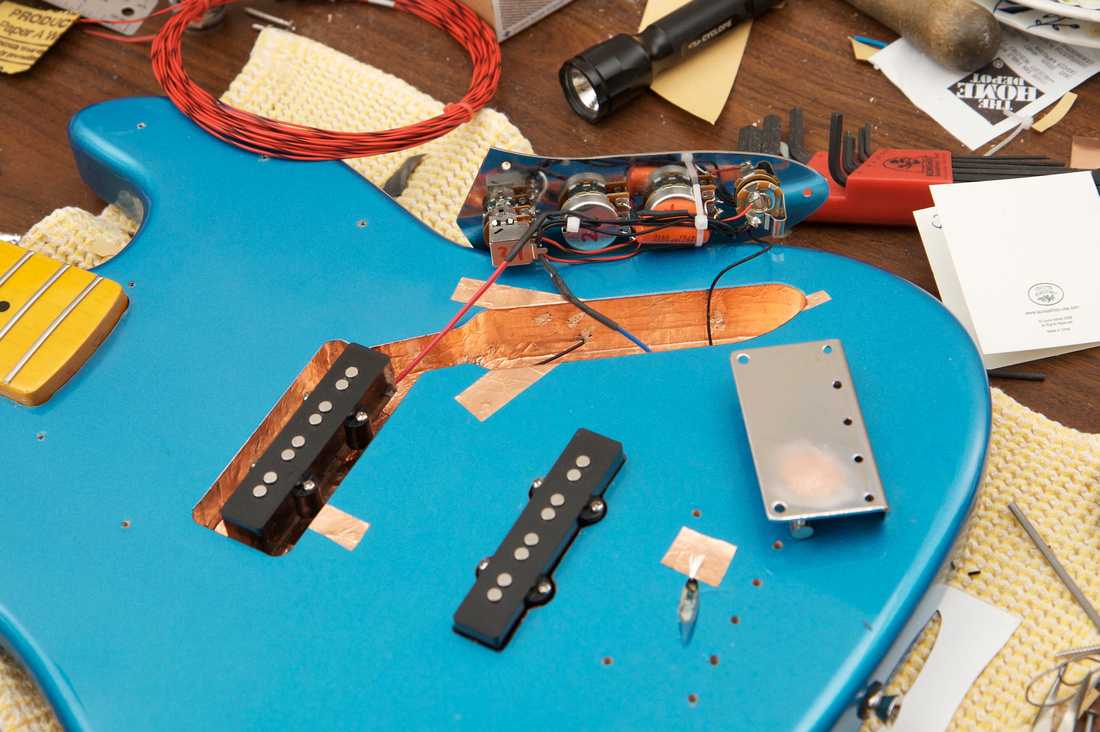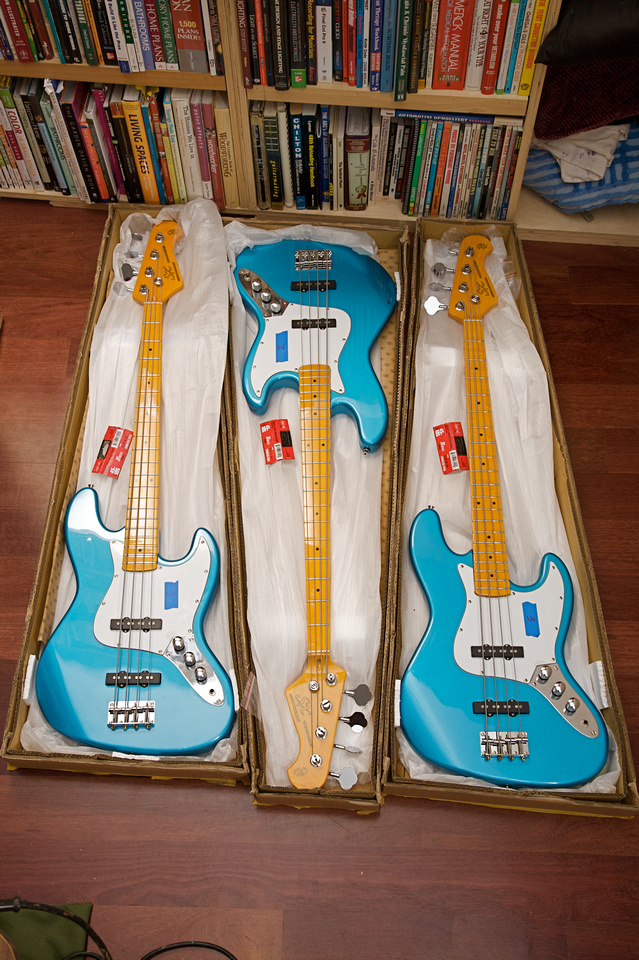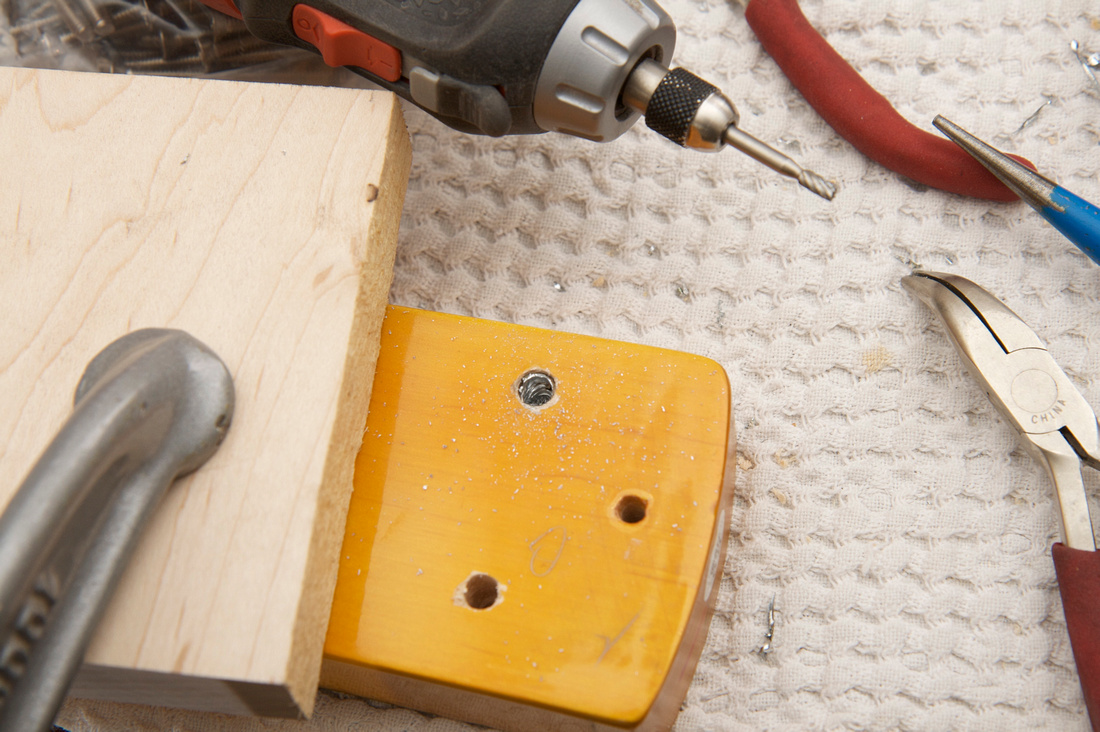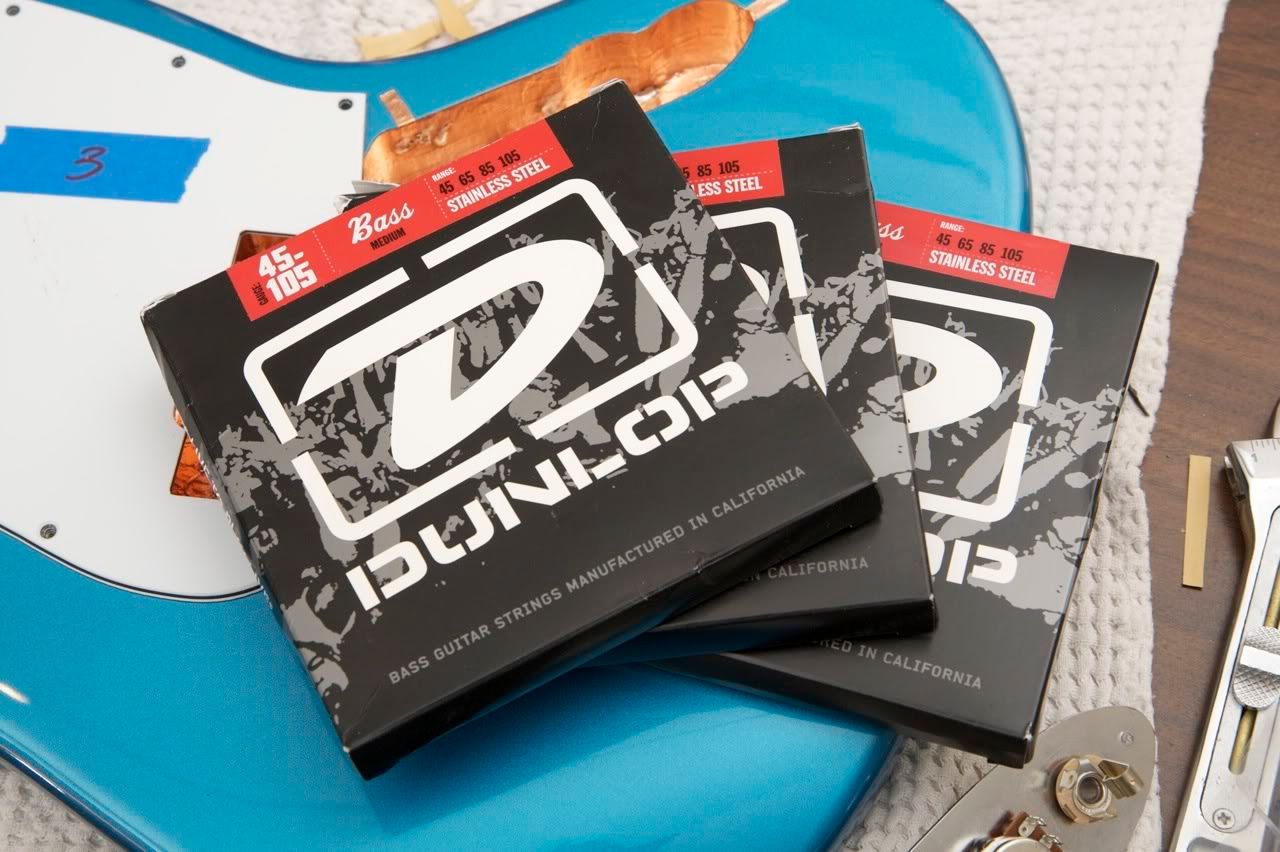I finished mixing the clips I recorded at my last session, but the sound files didn't come out that good due to operator error. I was monitoring the pre signal instead of post and there may have been some clipping. I'll get better samples recorded in the next
few days. But, for now, here are the "somewhat useable" ones. I
should have been more careful.
The signal chain for the bass channel is:
Countryman DI -->modded Ampex 351 preamp
--> MCI JH-600 console --> AD converter --> Logic Studio
I tried to make it sound nice, but still be "honest". Usually, we've
been tracking through a Sadowsky outboard preamp/DI, but I didn't put
that in because it colors the sound. . . colors it in a way that I like,
but you get a better feel for the natural sound of the bass without it.
Solo tracks are parallel mode on the pickups, tone wide open, volume
full up. I don't know what's happening on the jam clip in terms of bass
settings, but the signal chain is the same. There is significant bleed
however from the drum mics in the room. There is no EQ or compression
on the bass (though I should have going in for all that slapping. . .
would have avoided that ugly clipping).



I'll get better samples
up when I can be in the studio at a time when I can actually focus on
what I'm doing. The people itching to buy #2 and #3 are going to be
pissed that I want to do more "testing".
The good news is people love the way these basses play. . . the bad news
is, the bass teachers and working professionals like them so much that they want to keep them for
their own personal use. . . it's really the children that ultimately
suffer. If anyone viewing this thread knows a way I can get my hands on
more old-headstock 4 string SX P or J basses or if anyone has
"outgrown" theirs, please let me know. I will buy them, fix them
proper, and put them to good use. Perhaps the children will even
benefit :P
